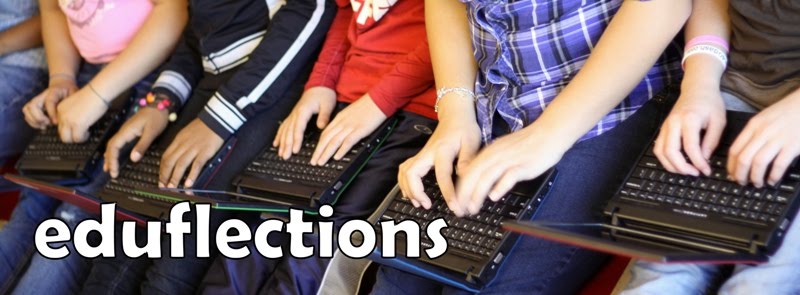Last year, I was given a challenge of becoming a self-contained classroom teacher, teaching all academic subjects to the same group of learners each day. Every year previous to that year, I had taught Reading Language Arts or a combination of Reading Language Arts and Social Studies. It seemed a daunting task to have to effectively add math and science to my repertoire. What I quickly discovered as I started digging into those subjects was that so much focus was put onto reading and math that science and social studies took a back seat. I didn't want that for my students. I wanted for them to gain a sense of wonder for the world around them and realize how much it impacts their every day lives.
Although I felt that I had a limited knowledge of the content for the science course of study, I began searching out experts who could (through the use of technology) join our class, bringing a different aspect to our class projects, labs, and experiences. I've had the good fortune to meet Pamela Harman, a Geoscience teacher at Spain Park High School, through the Alabama Network of NBCTs. I asked her if she thought her students would be interested in working with my students in places where our content overlapped. Her enthusiasm in tackling this new collaborative partnership was infective and we set off together on our new venture.
For our first collaborative experience, her students did presentations about significant astronomers for my students via Skype. As I mentioned in a
previous post, my students are currently creating interviews/conversations/dialogues between two different explorers or innovators. Her seniors taught my 5th graders about people that they had never heard of and set off a chain reaction of researching for more information to include in their own projects. When reading my students' reflections after this experience they said things like "You did a great job. You didn't need to be nervous," "this experience was life changing," and "I look forward to teaching you more about technology." Of course their reflection revealed changes they would like to see in the future.There was an overall consensus that they felt the need to give back, to teach the older students.
That opportunity came this week. Pamela's students were preparing to study Astronomy instruments. She asked if my students would be willing to teach her students a lesson on concave and convex lenses via Skype. My students were thrilled with this opportunity, Although their nerves manifested themselves throughout the process, they remained confident that they could teach these older students something of value.
As a whole group, we discussed what they felt made a good lesson...the ways they liked to learn. Then my 5th graders brainstormed ideas and built an interactive lesson in which all of the students involved could participate. They decided to start the lesson with a poll so that they could connect the lesson to something personal. Their poll was created on
Poll Everywhere and included finding out how many people were farsighted, nearsighted, both or neither. Students could take the poll online or via their cellphones. They created a
Wallwisher to house all of our links for the lesson and to lead into their next activity, having the Astronomy students create "stickies" to tell what they already knew about convex and concave lenses.
Most aspects of the implementing of the lesson were tackled by pairs of students. After the introduction activities, two of my students taught about concave lenses and two taught about convex lenses. Each pair created multiple diagrams to hold up in front of the camera for the other students to see. Then I had a student who volunteered to teach about Benjamin Franklin inventing bifocals (which ties into what we're studying in Social Studies). He explained how they worked and even had a pair of bifocals to hold up to the camera and demonstrate how it worked. Throughout these minilessons, my students took time to ask for some audience participation.

To wrap up and do an overview of the lesson, one of my students created and performed a rap about convex and concave lenses. To insure that all of the students could understand and catch all of his meaningful phrases and words, he created a podcast and posted it with the words onto our class' science wiki. We put a link to that page on the Wallwisher so that the SPHS students could view it again later. Then two more students created a quiz on
ProProfs Quiz Maker to assess how much was learned from their lesson and as one student put it, "to see if you were listening to us."
Yes, this lesson was designed, created and implemented by 10 and 11 year old students. Did these students know how to teach? Did they think about different kinds of learners? Did they make the learning active? Did everyone learn something and have fun? YES!!! When I read my learners' reflections that they wrote at the end of this 25 minute lesson, their observations further solidified my belief that you learn much more teaching something than just sitting and passively getting information. They understood that. They understood how to connect a lesson to real life, how to keep it interesting by varying the activities and keeping them interactive, and how to assess the learning of the other students. And, they understood what so many teachers are missing...technology supports good learning; it's not a separate entity.
On their way out the door with huge, confident smiles on their faces, they turned in their reflections. They asked, "When are we doing this again?" Soon, very soon.




